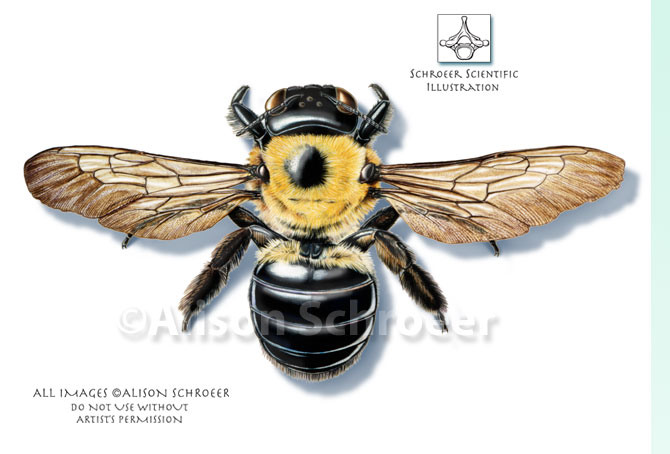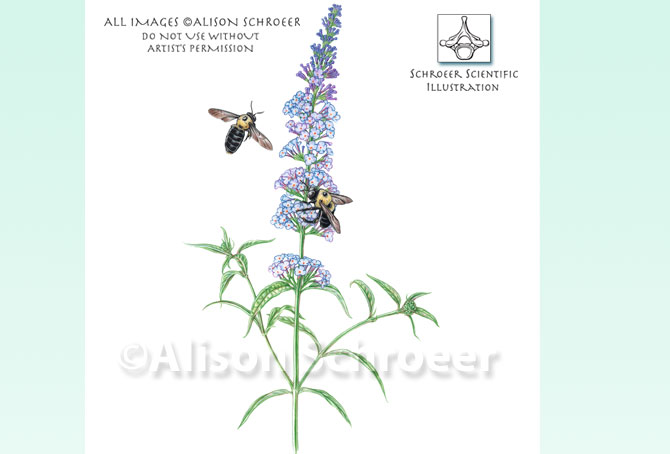
Cross section of fascia board at the gutter level of a house showing
drilled out tunnel with 3/8 inch hold at the base of the board
and white larva in the constructed cells at the end of the tunnel chamber.
The Carpenter Bee is a fascinating insect. Unlike the Honey Bee, the Carpenter Bee is solitary in that there is no cast system of workers, nurses and soldiers. The Carpenter Bee does the job of worker, nurse and soldier by herself with the exception of mating. The Carpenter Bee usually does not pose a direct threat to the homeowner, since it seldom stings. It can, however, do considerable amount of damage to wood structures if it is left uncontrolled.
The Carpenter Bee’s body segments, head, thorax, and abdomen are metallic black. The insect is sometimes mistaken for a Bumble Bee because of its size, shape, and color. Close observation in this location will enable you to easily identify them both. The Carpenter Bee is between 3/4 to 1 inch long. She is a large bodied insect with wide wings and feeds mostly on nectar and pollen. Carpenter Bees construct a nest by drilling a 3/8 inch hole in a board running behind a gutter or along porch decks. They will also bore into treated womanized lumber. The holes are usually drilled in the bottom portion or the thick portion of the board. I have also observed the drilling on the surface of the wood as well. When holes are drilled, they may go to either the left or the right direction and can be up to 12 inches long.
The female will then pack honey and pollen in a segment of the tunnel, lay an egg, and seal off the segment with cemented wood chips, thus creating a chamber or cell. She will continue to do the same with the rest of the tunnel, so that each cell is touching the other until the tunnel is filled. The eggs will develop into the prepupa stage, hibernate over the winter, develop into a wormlike pupa in the spring, and then emerge as adults between May 15 and June 30. Very often there is much damage done to wood this time of the year. The adults often eat their way out of the tunnel sideways, rather than through the tunnel, thus causing small chunks of wood to fall off the house. I have seen several hundred dollars worth of damage to wood on property where the insect was left uncontrolled. As a rule, Carpenter Bees usually drill several holes six to eight inches apart.
The natural enemy of the Carpenter Bee is the wasp. Wasps are scavengers and often prey on developing larva of the Carpenter Bee. Other Carpenter Bees usually try to steal the tunnel nest before it is completed. This usually results in a fight-sometimes to the death. The queen is always on visual alert when she is not gathering nectar. It’s impressive to watch her hovering near the tunnel opening like a miniature helicopter, occasionally buzzing off into any direction to ward off intruders.





Tidak ada komentar:
Posting Komentar